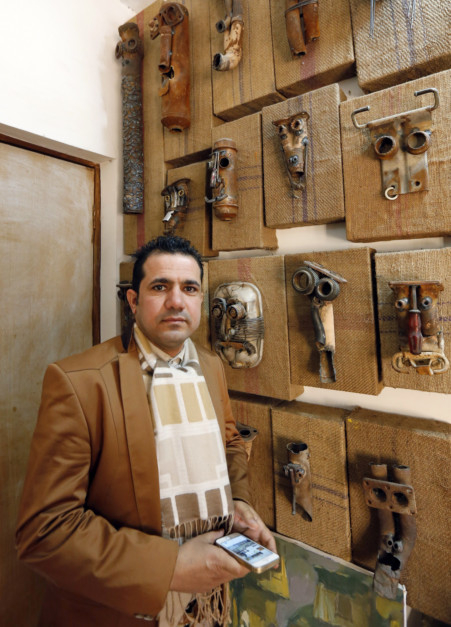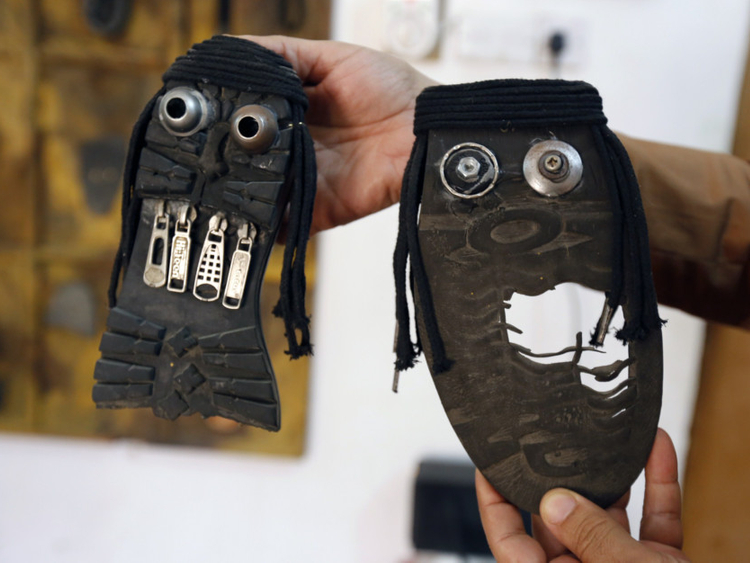
Baghdad: The Daesh militant glares at Baghdad residents with bulging eyes and bared teeth, but neither kidnapping nor death are imminent, because this militant is made from a shoe.
A black, treaded sole with the toe broken off serves as his face and nose, while old shoelaces evoke both black headscarf and long hair.
For teeth, zippers dangle into a mouth formed by the space between the heel and toe, and round metal pieces stand in for bulging eyes.
The militant is the creation of Iraqi artist Akeel Khreef, who takes worn-out shoes and transforms them into faces representing the “ugliness” of Daesh, which has committed a slew of atrocities in his country.
“I wanted to portray the extent of the criminality and ugliness and ugly acts of the organisation’s members,” says Khreef, a 35-year-old architectural engineering professor who is working on a mural of two dozen shoe faces.
With the faces, Khreef says he wants to portray “the ugly condition” that has prevailed in Iraq since June, and fashioning them from old shoes does so with a calculated insult of an especially Iraqi persuasion.
“I will not get them out of my country with this work, but... I am certain they would be embarrassed by it,” he says.
American officials frequently refer to breaking the “image” or “myth” of Daesh invincibility, but this can come to pass through art and humour in addition to military force.
To obtain supplies for this and other projects, Khreef collects bits and pieces from rubbish bins and buys old shoes from small shops.
“The most important person in my life is the cobbler - he provides me the remains of the worn-out shoes,” he says.
Khreef is sometimes mocked for searching through trash, but wants to convey the idea that “rubbish is not harmful, and can be used for useful things”.
“I work in the street,” he says. “I want the people to know this art.”
Khreef says the project is especially for people displaced by Daesh.
“I am trying to show Daesh in the ugliest form to comfort the people who left their homes and to tell them: ‘It is not just the soldier who is with you.’”
For Khreef, a “Daeshi” is “every man who does not love his country and does not love goodness, and believes in death, and rejects the other, and is ready to kill you when you disagree with him.”
Daesh has a history of greeting even symbolic opposition with kidnapping or brutal violence, and has executed hundreds of people who opposed it in Iraq and Syria.
Artists have fled areas under Daesh control or have been lying low.
Khreef says he is nonetheless determined to go forward with his project.
“Death is everywhere, and I am not more important than someone who defends his country and carries a weapon and goes to confront the enemy face to face,” he says.
And if the worst happens, “at least I would die believing in a true cause”.












